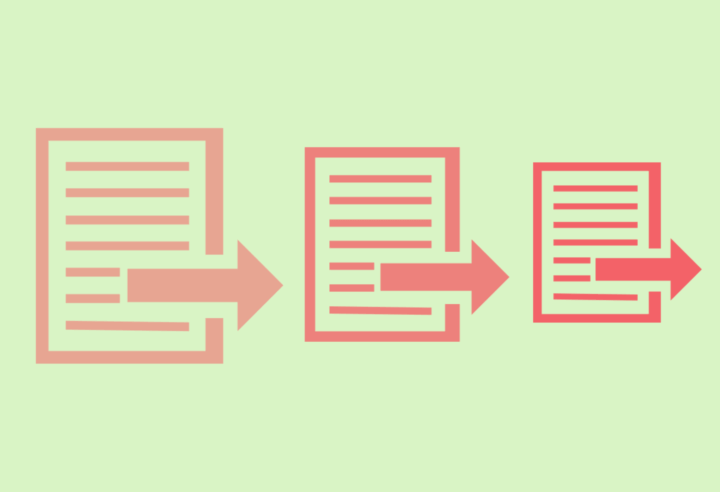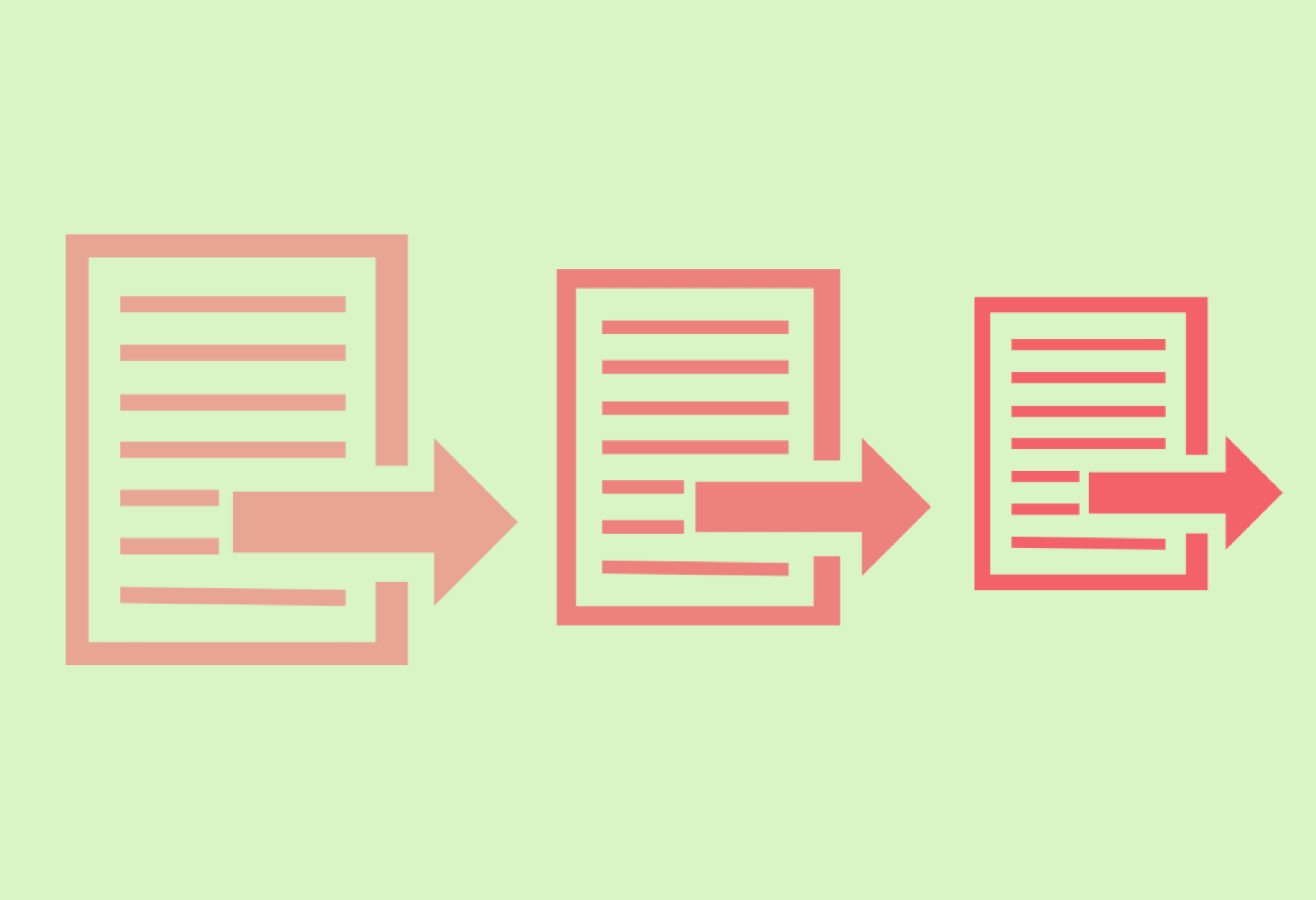The traditional model of the marketing funnel shows that your pool of potential customers gets smaller and smaller as the prospects get closer to making a conversion.
Further parts get smaller, as it’s nearing a conversion. At the conversion point, you have an even smaller audience because many will decide not to pay for your products or services. Your mission is to make the funnel work in such a way so that more people end up buying from you.
This is where content marketing can help you.
Even though some people assume that it works only at the beginning of the funnel, content marketing actually works in every part of the funnel. In fact, it’s most useful in places where it could help the funnel get wider and allow for more people to get to the conversion and through it successfully. And content is so versatile that you can tailor it to suit each part of your funnel.
Have you heard of Smart Content Marketing?
This might help you – this means that a website is fully integrated with tools and plugins that allow the website to show appropriate content to each visitor in regards to their funnel stage. Static content isn’t what works now.
Many companies still use it but it mostly leads them to miss opportunities. Some companies have failed because they haven’t used practices like retargeting, split testing, landing pages, forms and surveys.
Expectations that the buyers have are different. They want personalized content that will slowly guide them through buying process. There is also more competition online but also more marketing tools that can help you with marketing.
A piece of content – no matter how good won’t sell the product, especially if you haven’t even had one interaction with the customer.
What will get them to buy is providing them with the right content at the right time. You need to be aware of where in the funnel said customer is and how you can get them through the funnel seamlessly. This will help you gauge when your customers can make a conversion. And this is precisely why content marketing based on the stage in the funnel is great.
So, because there are four different stages of the sales funnel, there are four different types of content that you should create

Prospect Becomes Aware of Your Brand: Top Of the Funnel
This is the first stage of content marketing.
Your main goal here is to make as many people aware of your brand as possible. When your product is new and people normally aren’t aware of the use of this product or service, you are also teach the market that there is a problem that they need to solve.
With the advent of AI content, you need to be doing as much top of funnel content marketing as possible.
Just be sure you use an AI checker to avoid any problems with the content ranking.
Besides making as many people aware of your brand as possible, try to make them interested in your brand, too. Click To TweetAnother thing you should do is try to make people interested in your brand – awareness is one thing and you are also probably aware of many brands but only actively interested in few. So, make sure that your audience is curious to find out more.
They might not be buying yet, but the fact is that they need to be interested in your brand and trust your content if anything else.
Your goal could also be to nudge a few people into buying but you should never talk about yourself or your services but rather about the customer, their needs, expanding their knowledge and helping them. They will feel grateful to your brand and appreciate you more for it.
The kind of content that works in this area are:
- blog posts,
- videos,
- infographics,
- webinars,
- long-form content,
- guides,
- email newsletters
So, any type of content that can:
- educate,
- inform,
- help
- guide
This way, your content is helping the prospects become more educated and competent to make a decision, which will make it easier for them to convert later.
You have probably read so many of these, top of the funnel articles. They are everywhere on the web. Use these to cause more people to feel like they can trust you and like your content is useful.
“This is a very important phase. It’s like making a first impression on someone – you have to make sure it’s good and memorable. This is how they will remember you, how they will feel about you. This dictates whether you’ll be able to make that sale or not,” says Tim Thompson, a Senior Marketer at WriteMyX and BritStudent.

Prospect Considers Buying From Your Brand: Middle of The Funnel
In this phase, the customer sees the solution you offer, not just their problem or your content that helps.
They realize that your product or service might be able to help them even more. This is the time to create content that will help them see why your product is useful, why they should use it and so on – this helps them evaluate what you have to offer and compare it to other common solutions on the market. They might not trust your product enough yet, but they are considering you.
You are now speaking directly to your target audience and teaching them how you can help them.
At this stage, you should offer
- how-to content with your products,
- case studies,
- product descriptions,
- demos
You should teach people on how to use your product. However, you shouldn’t focus on what you are trying to sell, but set it up as a means to an end.

(Source: https://searchengineland.com/seo-case-study-0-100000-visitors-12-months-277995)
Time To Convert: Bottom Of The Funnel
This is the time to make that sale – or pitch.
Sadly, this is the narrowest part of your funnel because many of your prospects will give up on the sale for various reasons – they don’t have enough money, they don’t trust you enough and so on. However, the ones who are still there are very interested, almost convinced that they should buy.
They just need that one final nudge. Use:
- testimonials,
- reviews
- direct mail

This content is more straightforward – you can have:
- very clear CTAs that invite them to buy,
- copy that outlines what your customers will get with this product
- product comparisons.
Retaining Customers: After the Funnel
When you get the customers to convert, you now need to focus on keeping them.
One of the crucial parts of this step as well is content marketing. However, now you are focusing on keeping the customers and turning these customers into repeat customers and possible brand advocates.
So, you should focus on:
- insider guides,
- email outreach,
- special offers,
- customer support,
- exclusive content.
Be kind and friendly with your customers – they are now a part of your community, so treat them like that. Use every available opportunity to share value and quality with your customers.
There are also some other stages which mix in the middle. For instance, one of those stages is the desire stage which is the phase when the prospect has decided to buy but they need to make a decision which company to buy from.
Email communication at this stage is essential and should revolve around enticing the prospect to have a talk with the sames team or you should ask if they have any questions or concerns that you could help them with.
Thus, you should produce product or service elements like:
- free trials,
- demonstrations and cost estimates,
- gift cards,
- offer free product launch dinners
“This could potentially be a very good phase for you, if you do it properly. You know that someone – the prospect – wants your product. You just have to convince the a bit further to get them to convert. This is not an easy thing, even at this stage, but it’s still achievable,” says Leonard Gaskell, a Content Manager at 1Day2Write and Australia2Write.
Be kind and friendly with your customers - they are now a part of your community, so treat them like that. Click To TweetMake sure that you know what content is or what it could be. Some people say that content is just another word for blogging but that’s a completely wrong opinion.
What content marketing and content in general are is a bit difficult to define because content can literally be anything.
- Your pricing
- Videos and images
- FAQ
- testimonials,
- user reviews,
- social media posts,
- ads,
- carousels
- email,
- every announcement,
- every post.
So, make sure that all of these types of content are still in accordance with your funnels.
Every stage of the customer’s journey requires different content and different approach. You are probably already posting different versions of the same content on the social media platforms so you are already familiar with what you are supposed to do. Make sure that the content is right straight from the top of the funnel to the bottom. No matter what stage your customers are in, you can count on your content being the star of your marketing campaigns.
Want to help contribute to future articles? Have data-backed and tactical advice to share? I’d love to hear from you!
We have over 60,000 monthly readers that would love to see it! Contact us and let's discuss your ideas!


